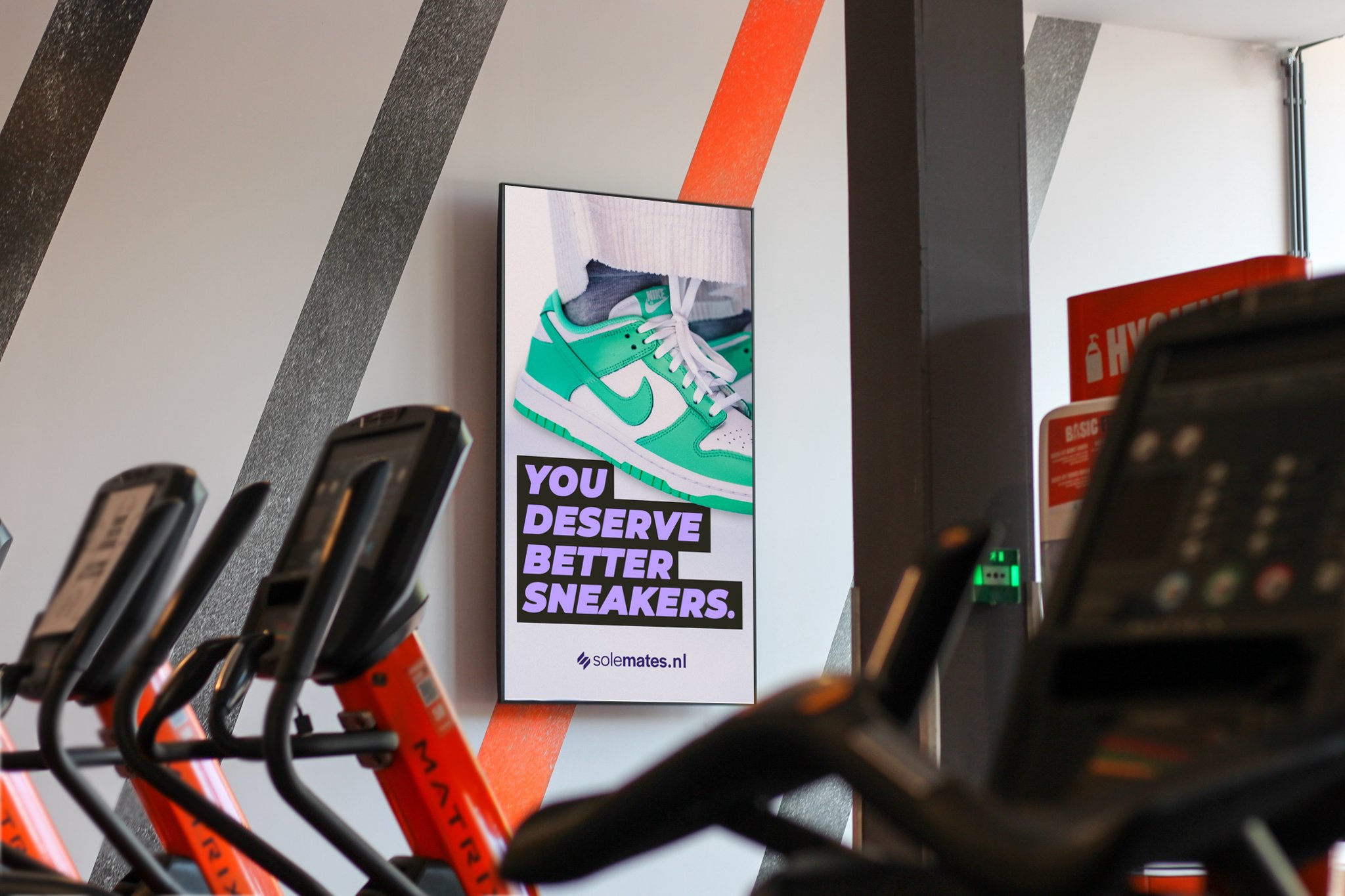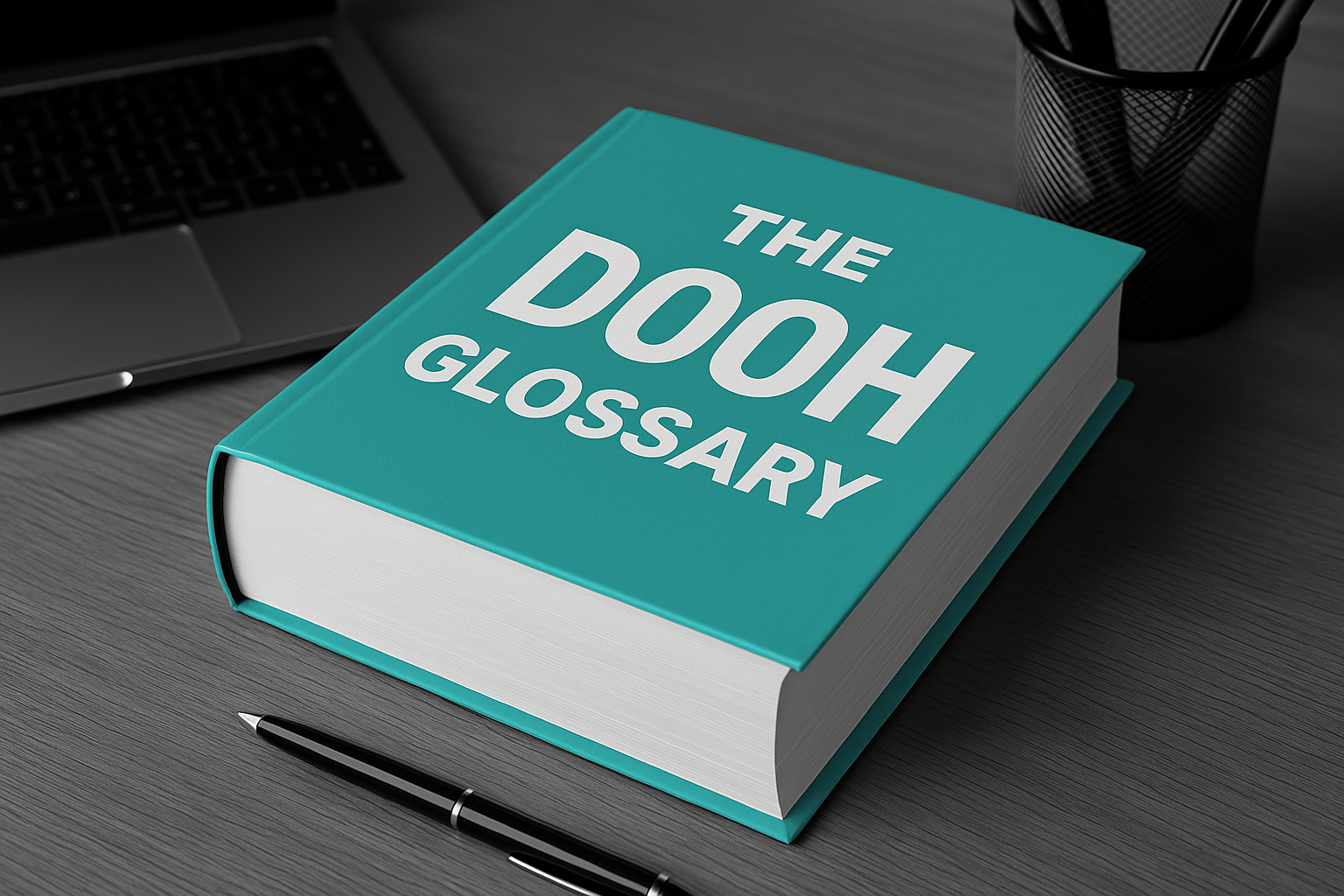Digital Out-Of-Home (DOOH) advertising is rapidly expanding and transforming the traditional media landscape. To help you navigate this space, we’ve compiled a complete glossary of essential terms.
The DOOH Glossary
Audience
The number and type of people exposed to a screen with an opportunity to see the ad. Audience can be measured using demographic, socioeconomic, or behavioral data.
💡💡Dimitri’s insight (CEO): "DOOH audience is fascinating because it combines digital accuracy with physical impact. Unlike traditional media, we can really understand who sees our ads and in what context."
Audience Impressions
A measurement unit that includes the total number of people who have an opportunity to see (traffic), notice, and engage with a message, based on ad duration.
Digital Billboard
A display that rotates multiple ad creatives every few seconds using digital technology. Content is usually static and displayed in short cycles.
CPM (Cost Per Mille)
The cost of reaching 1,000 impressions. In DOOH, CPM is a key metric for measuring campaign efficiency.
💡Max’s insight (CPO): "CPM in DOOH should be viewed differently than in traditional digital media. One impression may reach several people at once, making it more cost-efficient than expected."
DOOH (Digital Out-Of-Home)
Digital advertising messages specifically designed to reach consumers outside the home. This includes screens in streets, malls, transit systems, and more.
DCO (Dynamic Creative Optimization)
Technology that automatically adapts creative content based on context (weather, time, location, etc.)..gif?width=1080&height=1080&name=MEMES%20(1).gif)
DSP (Demand Side Platform)
A platform used to buy advertising space programmatically. DSPs allow advertisers and agencies to efficiently and precisely purchase DOOH inventory.
Frequency
The average number of times a person is exposed to an ad during a given period.
Inventory
All available ad space across digital screens.
DOOH Buying Methods
There are several ways to purchase DOOH ad space:
1. Direct Buying
Pros: Direct contact with sellers, negotiable rates, guaranteed slots
Cons: Less flexible, longer process
2. Programmatic Buying
Pros: Flexibility, automation, precise targeting
Cons: Can be more expensive, requires technical knowledge
💡Our team’s take: "Choosing between direct and programmatic buying often depends on your goals. For tactical, local campaigns, direct buying is more relevant. For national reach and flexibility, go programmatic."
Programmatic
Automated buying and selling of ad space in real time, allowing for refined targeting and continuous campaign optimization.
Reach
Number of unique individuals exposed to a campaign over a given period.
RTB (Real-Time Bidding)
Real-time auction system for buying DOOH placements programmatically.
SSP (Supply-Side Platform)
Platform used by publishers to sell their DOOH inventory via DSPs.
Social DOOH
Strategy that combines DOOH and social media to maximize visibility — e.g., sharing a physical campaign on Instagram or TikTok.
Share of Voice (SOV)
The percentage of screen time purchased by one brand compared to others.
Viewability Rate
The percentage of a target audience that actually saw the ad. In DOOH, this is often higher than in digital due to screen placement.
Environments
Thematic screen categories based on audience interests (sports, shopping, B2B, youth, etc.).
The DOOH Market Today
The DOOH market is evolving fast, driven by key trends:
- Continued Growth: The global DOOH market is projected to reach $38.96 billion by 2024.
- Rise of Programmatic: Programmatic is expected to represent 50% of all DOOH transactions by 2026.
- Digital/Physical Convergence: DOOH campaigns are increasingly integrated into overall digital strategies.
💡"DOOH is no longer a standalone channel. It's part of a wider ecosystem where digital and physical boundaries are blurring — and that’s what makes it so powerful." — Dimitri, CEO
Ready to explore the DOOH universe?
With glooh, you can:
-
Simulate your campaign for free at www.start.glooh.co
-
Choose between guaranteed or programmatic buying

